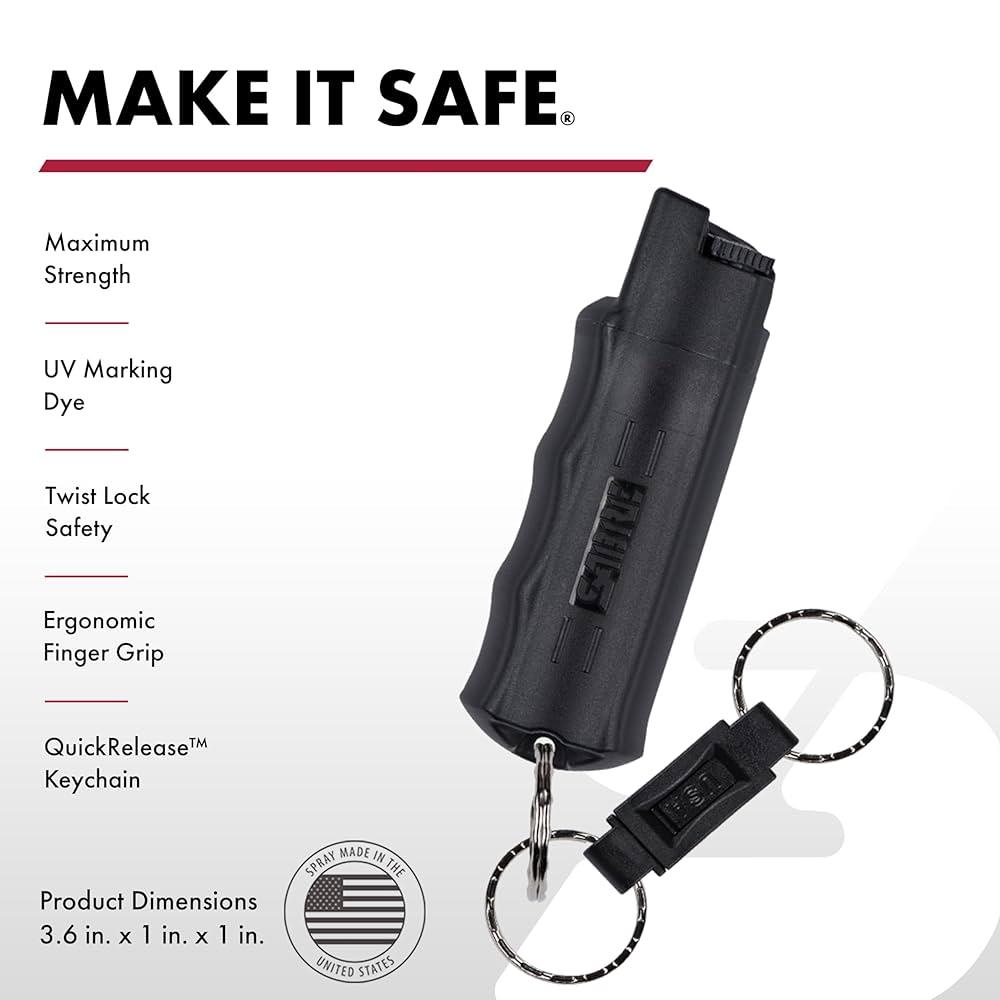Table of Contents
- Updated Compliance Requirements for Self-Defense Spray Certification in 2025
- Enhanced Training Protocols and Safety Standards for Effective Use
- Legal Considerations and Liability Protection for Instructors and Trainees
- Best Practices for Incorporating Scenario-Based Training in Curriculum
- The Conclusion
Updated Compliance Requirements for Self-Defense Spray Certification in 2025
Starting in 2025, individuals seeking certification to carry and use self-defense sprays will encounter new regulatory measures designed to enhance safety and ensure comprehensive training. States now require candidates to complete a standardized training curriculum that covers not only the operational use of defense sprays but also situational awareness, legal implications, and de-escalation techniques. Certification programs must include a hands-on component, as well as a written examination, to verify understanding of both practical skills and state-specific compliance.
Key compliance changes include:
- Mandatory background checks prior to training enrollment
- Restrictions on spray formulations and delivery systems meeting updated safety standards
- Regular renewal of certification every two years with refresher courses
- Enhanced record-keeping requirements for instructors and certifying bodies
Enhanced Training Protocols and Safety Standards for Effective Use
New mandates require all self-defense spray training to incorporate comprehensive simulation exercises designed to replicate real-world scenarios more accurately. Trainers must now emphasize situational awareness, de-escalation techniques, and immediate post-use protocols to ensure responsible and effective deployment. This approach not only boosts confidence in handling the device but also minimizes unintended consequences, aligning training methods with the latest state safety requirements.
Furthermore, strict safety standards have been established around the use and storage of self-defense sprays during training sessions. These include:
- Mandatory use of protective gear for all participants during live practice drills.
- Implementation of clear communication signals to prevent accidental discharges.
- Regular certification renewals to ensure ongoing compliance and skill retention.
- Inclusion of legal briefings covering rights and responsibilities related to spray deployment.
These enhanced protocols serve as a critical foundation for safeguarding both trainers and trainees, promoting responsible self-defense practices statewide.
Legal Considerations and Liability Protection for Instructors and Trainees
With the new state regulations taking effect in 2025, both instructors and trainees in self-defense spray courses must prioritize understanding the legal frameworks that govern their practice. Instructors are now required to obtain specific certifications and maintain detailed records of all training sessions to ensure compliance with state mandates. Trainees should be made aware of their personal liabilities and the proper usage limits to avoid legal repercussions. Failure to adhere to these updated laws could result in significant penalties, including fines and civil liabilities.
To mitigate risks, experts recommend implementing comprehensive liability waivers and clear safety protocols during all training exercises. Key measures include:
- Verification of instructor credentials before course commencement.
- Explicit acknowledgment of potential risks by all participants.
- Use of simulated sprays or inert training devices to reduce accidental exposure.
- Documentation of emergency procedures and immediate medical support availability.
Adhering to these best practices not only protects individuals involved but also upholds the integrity of self-defense spray training programs amid tightened regulations.
Best Practices for Incorporating Scenario-Based Training in Curriculum
Integrating scenario-based exercises into your self-defense spray training curriculum can dramatically enhance learner engagement and retention. To maximize effectiveness, ensure the scenarios mimic real-world encounters where the use of self-defense spray may be necessary. Incorporate a range of situational contexts-such as varying environments, attacker types, and legal considerations-to prepare trainees for diverse challenges. Additionally, real-time feedback during simulations helps participants adjust their responses and develop critical decision-making skills under pressure.
Educators are encouraged to balance scenario difficulty to gradually build confidence without overwhelming trainees. Utilize interactive elements like role-playing, peer assessments, and video analysis to enrich the learning process. Moreover, aligning all scenario content with the latest 2025 state regulations ensures compliance and relevance, empowering learners with both practical skills and a thorough understanding of legal boundaries. Consistent updates to scenarios will keep the curriculum responsive to evolving laws and emerging self-defense best practices.
The Conclusion
As 2025 ushers in updated state regulations for self-defense spray training, staying informed is crucial for both instructors and users. These changes reflect evolving safety standards and legal considerations, emphasizing the importance of proper education and compliance. Individuals are encouraged to review their state’s specific requirements and seek certified training to ensure responsible and effective use. As regulations continue to adapt, ongoing awareness will remain key to personal safety and lawful preparedness.Check Our Other Blogs
- StunGun – Your Trusted Source for Stun Guns, Laws, and Self-Defense Tips
- PepperSprayLaws – Your Trusted Resource for Pepper Spray Information
- StunGunLaws – Your Trusted Guide to Stun Gun Legality and Safety




